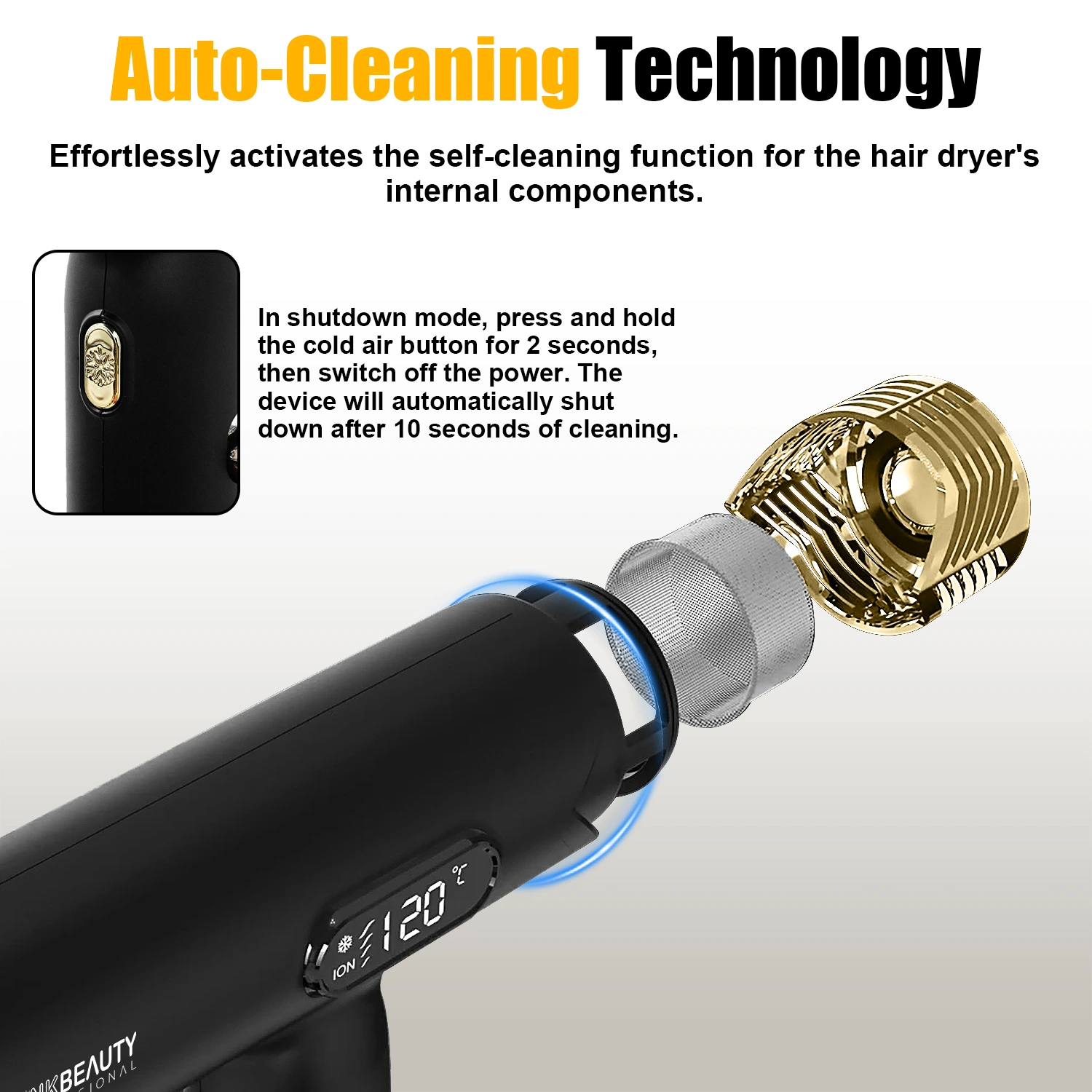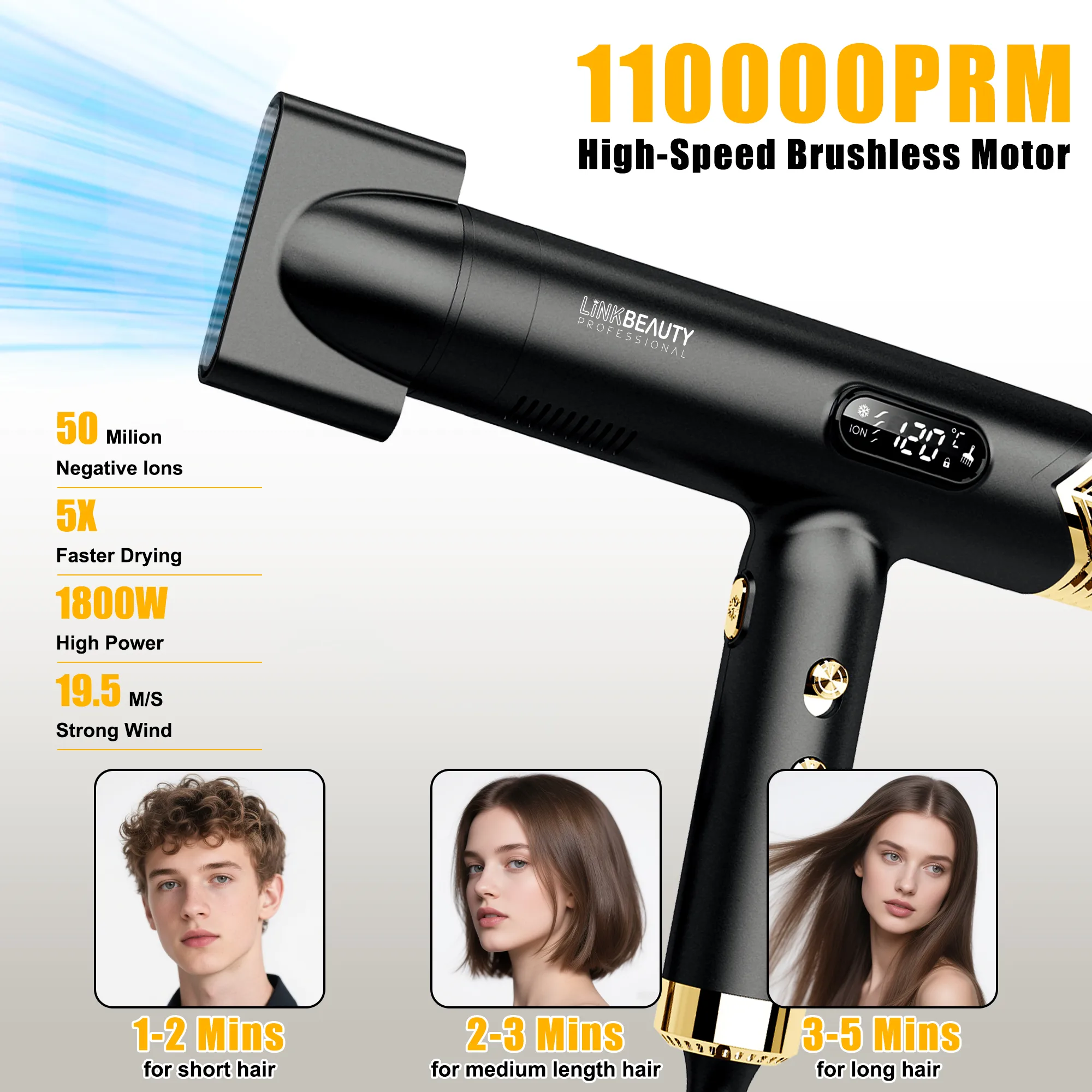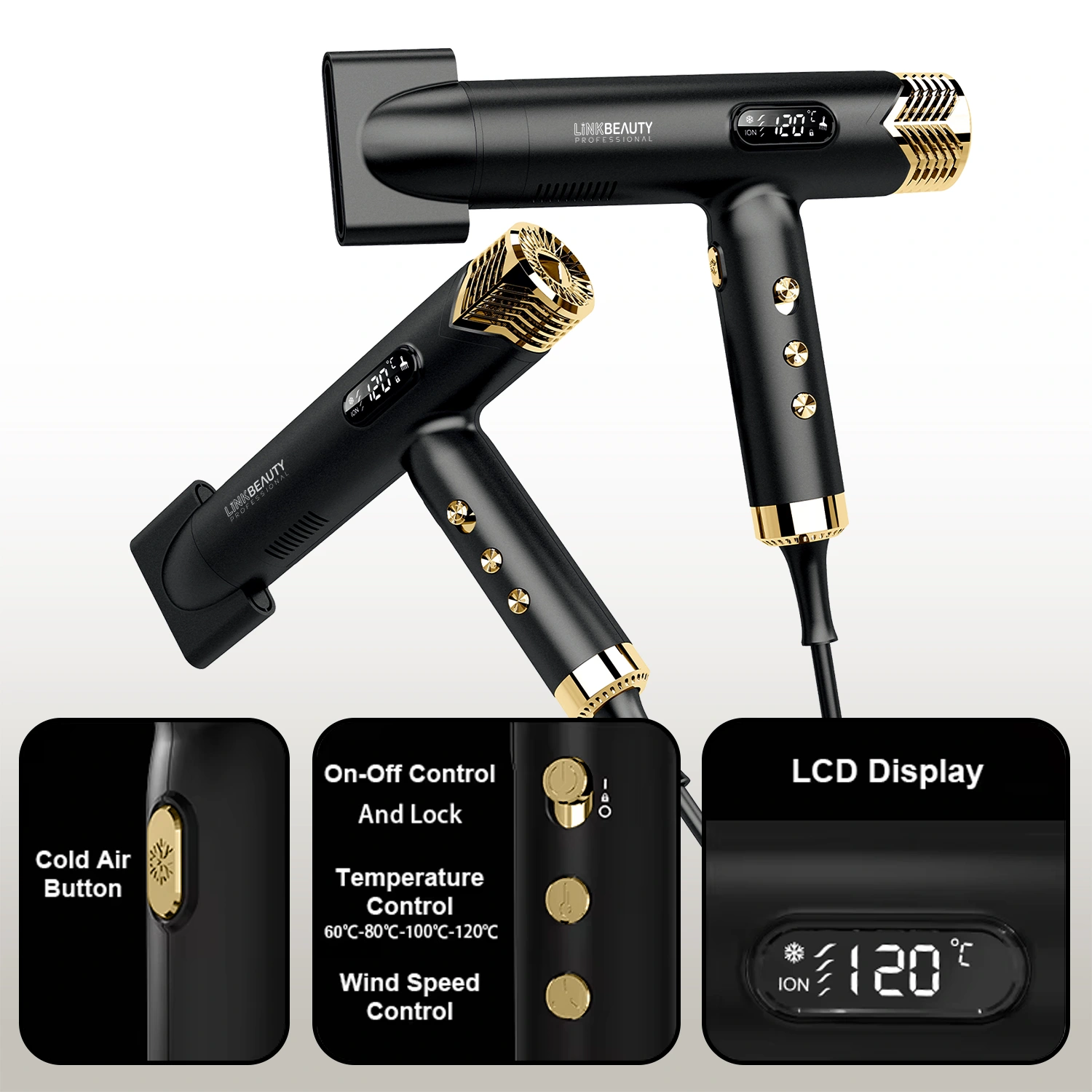
Hair dryers are a daily go-to for styling. They dry your hair fast with neat tricks like negative ions, adjustable heat, and quiet motors. But they need a bit of care to stay in top shape. Cleaning the filter is a big deal, though lots of folks skip it. Figuring out how to do it keeps your dryer safe, working great, and lasting longer.
Why Should I Clean My Hair Dryer?
You definitely should! Dust, lint, and stray hairs get stuck in the filter over time. That blocks the air and makes the motor work too hard. It can overheat, perform poorly, or even break for good. Cleaning it regularly keeps the air moving and protects the insides in many daily applications for hair dryer. Just switch off the dryer, hold the Cool shot button for 5 seconds, and the fan spins fast to clean itself.
How Often Do I Need to Clean It?
It depends on how much you use it. If you dry your hair every day, give the filter a quick clean once a week. If you only use it sometimes, once a month is plenty. In busy spots like salons, you’ll need to clean more often since the dryer’s always on.

Finding Your Hair Dryer’s Filter
Where’s It At?
Most dryers have a filter at the back where air gets pulled in. For example, this one has a tight mesh to keep hair out. Some have a cover you can pop off easily.
What’s the Filter’s Job?
It stops dust, lint, and hair from sneaking into the motor. That keeps the dryer running smoothly and makes the motor last longer by keeping junk out.
Getting Ready to Clean
Unplug and Let It Cool
Always unplug your dryer first. If you just used it, wait until it’s cool to avoid burns or electrical trouble.
Grab Some Tools
You’ll need a soft brush (an old toothbrush is perfect), a microfiber cloth, some mild soap (if washing’s okay), warm water, and maybe tweezers for stubborn bits. Make sure your tools are clean.
Taking Off the Filter
Popping Off a Cover
If your dryer has a removable cover, gently twist or unclip it as the manual says. Don’t force it. If it’s tricky, peek at the instructions.
Handling Fixed Filters
Some dryers, like this portable one with a safety plug to stop hair from getting sucked in, have filters you can’t take out. Use a soft brush or a puff of compressed air through small gaps. Don’t try to take the dryer apart.
Cleaning the Filter Right
Brush Away the Dust
Take a soft brush or toothbrush and gently sweep off dust and lint from both sides of the filter. Light circular motions work best to keep the mesh safe.
Don’t Mess Up Delicate Parts
Skip sharp tools or pressing too hard. You might rip the mesh or knock something loose inside.
Washing the Filter (If It’s Allowed)
Check the manual to see if you can wash the filter. If it’s okay, soak it in warm soapy water for 5–10 minutes. Gently rub it clean with your fingers or a brush.
Dry It All the Way
After washing, shake off extra water. Let the filter air dry completely before putting it back. Wet parts can cause short circuits or rust.
Putting the Filter Back
Line It Up Nicely
When it’s dry, slide the filter back in carefully. Make sure it fits tight with no gaps for air to sneak through.
Lock the Cover In
Snap or clip the cover back on securely so it doesn’t wiggle when you use the dryer. A loose cover can mess things up or be unsafe.
Testing Your Dryer
Give It a Quick Spin
Plug the dryer in and run it on low for 30 seconds. Feel the airflow and make sure the heat stays steady.
Listen for Weird Stuff
Keep an ear out for odd noises like rattling or buzzing. That could mean something’s not back together right. Check that the airflow feels strong. If it’s weak, look for leftover gunk.
Making Cleaning a Habit
How Often to Do It
Like I mentioned: once a week if you use it daily, once a month if you use it less, or every two weeks for pros with high-speed dryers like this salon one that spins at 110,000 rpm and cuts drying time in half.
Signs It Needs Cleaning ASAP
- Airflow feels puny
- Dryer gets too hot
- It’s louder than normal
- You smell something burning
- Drying takes way longer
If you notice any of these, clean it right away, no matter when you last did it.

Want a high-tech dryer that’s easy to maintain? Link Beauty dryers have self-cleaning modes, blast out 200 million negative ions, and use smart heat settings to keep your hair happy. Many have an automatic reverse air feature, so cleaning’s a snap while still delivering awesome results.
Link Beauty’s pro dryers have a zippy 110,000 RPM motor, weigh just 268g, and have settings for all hair types—even your pet’s! We have got safety features like NTC Overheat Protection and are great for home or travel with their small size and solid performance.
Cleaning your dryer’s filter regularly makes it last way longer. Pair it with a cool tool like Link Beauty, and you’ll get salon-worthy hair every time without any fuss.
FAQ
Q: Why should I clean my hair dryer’s filter?
A: Cleaning the filter keeps your dryer in good shape. Dust, lint, and hair can clog it up. This blocks the air from flowing. When that happens, the motor has to work harder. Working harder can cause overheating. It might even damage your dryer. Regular cleaning keeps the airflow strong. It also protects your dryer.
Q: How do I find where the filter is?
A: The filter is usually at the dryer’s back. That’s where air gets sucked in. Some models have a cover you can pop off. Others have mesh that stays put. When in doubt, peek at the manual.
Q: Can I clean the filter without taking it out?
A: Yes, you can for fixed filters. Use a soft brush. Compressed air also works well. Clean through the small openings. Don’t try to take the dryer apart. For removable filters, pop off the cover. Just follow the manual’s steps.
Q: Can I wash the filter with water?
A: Only if the manual says it’s okay. If it is washable, let it soak in soapy warm water. Soak it for 5–10 minutes. Scrub gently after soaking. Then, let it air dry all the way. Make sure it’s completely dry before putting it back.
Q: What if I don’t dry the filter fully?
A: A wet filter is risky. It could cause short circuits. It might also lead to rust inside the dryer. Always let it air dry completely. Never put it back until it’s totally dry.



